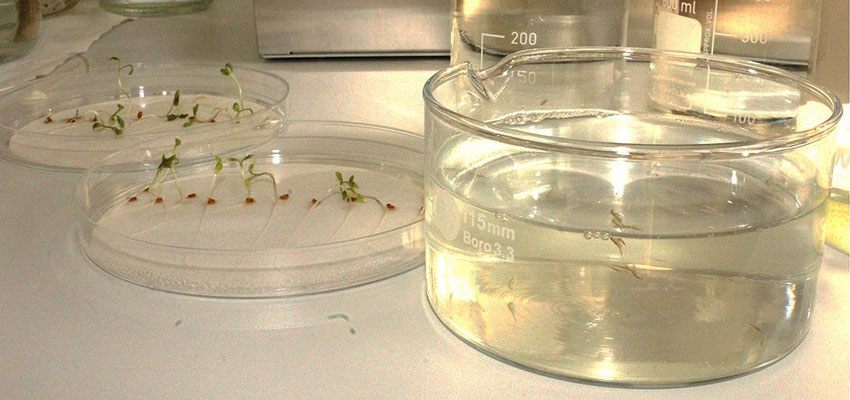AGROLAB Italy expands its analytical offer in the field of ecotoxicology by developing specific methods for the classification of marine sediments and wastes.
We have completed our offer of #ECOTOXICOLOGY analysis, going to develop and accredit the tests required by the Ministerial Decree 173/2016 on the handling and management of marine coastal sediments.
At the same time, we have developed the tests required for waste characterization, for the purpose of assigning the hazard characteristic #HP14 - ECOTOXIC.
In this regard, recently released are the new guidelines on the classification of waste already approved by resolution of the Council #SNPA n.61/2019 and now AGROLAB Italia can offer the entire package of analysis required by the legislation with acute and chronic tests at competitive prices.
All this is in addition to the tests provided for by Legislative Decree No. 152 of April 3, 2006, which introduces the use of ecotoxicological tests in the control of industrial and civil wastewater and sediments of inland waters, long performed in our laboratories.
WHY ECOTOXICOLOGICAL TESTS AND WHAT ARE THE OBJECTIVES OF THIS INVESTIGATION?
The ecotoxicological assay is a biological experiment aimed at verifying whether an environmental sample, or a potentially toxic compound, causes a relevant biological response in the organisms used for the test.
In this way, the objective is no longer the simple protection of the health status of the individual according to hygienic-sanitary criteria (classical toxicology), but rather the preservation of the functional integrity of ecosystems.
Integrity that is assessed by measuring of ecotoxicity of environmental samples, through test batteries using a range of target organisms.
Typically, organisms are exposed to different concentrations or doses of a test substance or sample (wastewater, waste, sewage sludge, soil, river or marine sediment,....) diluted in an appropriate medium.
The Ecotoxicity tests used in ecotoxicological investigations are divided into acute, sublethal, and chronic:
- The acute ecotoxicity test estimates adverse effects that occur within a short time (not exceeding one-third of the average time between birth and attainment of sexual maturity and during which the organism can be maintained in good condition in the absence of food) after administration of a single dose of a substance;
- The subacute (sublethal) ecotoxicity test estimates the adverse effects that occur after exposure to a substance for a period <= 10% of the lifetime of the organism (and during which the organisms are fed);
- The chronic ecotoxicity test estimates adverse effects that occur after exposure to a substance for a period > 50 % of the lifetime of the organism.
Ecotoxicological tests have several advantages:
- They allow comprehensive assessments of the impact of all pollutants on the natural environment;
- They allow the identification of toxic effects even when the composition of the sample is not known or not all possible constituents have been investigated;
- They ascertain and quantify toxic effects on living organisms, using sensitive indicator species;
- Are simple, inexpensive, and give easily understandable answers;
- Are carried out in laboratory under controlled and standardized conditions.
How is ecotoxicity measured?
The results of ecotoxicological assays can be expressed as:
- Percent Inhibition (I %);
- Effect Concentration (ECx = concentration that produces an effect in a certain percentage (x) of the exposed organisms);
- LCx: Lethal Concentration on a specified percentage of exposed organisms, sometimes required by legislation ;
- Estimation of LOEC and NOEC, the concentrations of Lowest Effect and Non-Effect..
OUR OFFER:
Marine sediment testing according to table D. Lgsl 173/16
- Inhibition of bioluminescence of V. fischeri in solid and liquid phase;
- Inhibition of algal growth with seawater algae UNI EN ISO 10253;
- Mortality test at 7 days of exposure with Acartia tonsa MU 2366;
Test for the classification of waste according to EC Reg. n. 440/2008
- Acute toxicity test 24 and 48 h with Daphnia magna UNI EN ISO 6341 and OECD 202;
- Acute toxicity test on fish embryos (FET) OECD 236;
- Acute algal growth inhibition toxicity test with freshwater algae ISO 8692 / OECD 201;
- NOEC on different taxonomic groups.
Tests required by D. Lgs 152/06
- Acute toxicity test with Daphnia magna UN EN ISO 6341 / APAT CNR IRSA 8020;
- Bioluminescence inhibition test with Vibrio fischeri ISO 11348-3 / APAT CNR IRSA 8020;
- Acute toxicity test with Artemia spp. APAT CNR IRSA 8060;
Tests on compost, sludge and eluates
- Germination index with higher plants UNI 10780 / UNI EN 16086-2;
- Acute toxicity test with Daphnia magna UN EN ISO 6341;
- Bioluminescence inhibition test with Vibrio fischeri ISO 11348-3.
Optional
- Test di tossicità cronico di riproducibilità con Daphnia magna OECD 211
- Test di tossicità cronica sull’inibizione della crescita algale con alghe d’acqua dolce ISO 8692 / OECD 201
Why choose AGROLAB Italia
- we are among the few Italian laboratories to have the appropriate #COMPETENCIES;
- our skills are covered by #ACCREDITATION;
- we offer dedicated customer support (#CRM) and #TIMELESS in responses.
How to choose AGROLAB Italy:
- To request a quote you can contact our #SALES MANAGERS;
- DAVIDE SARTORI (
This email address is being protected from spambots. You need JavaScript enabled to view it. ) Tel: +39 0444 349040 - Mobile: +39 346 3544167
- DAVIDE SARTORI (
- To receive technical assistance you can contact our #CUSTOMER RELATIONSHIP MANAGER (CRM)
- MATTIA FAVARO (
This email address is being protected from spambots. You need JavaScript enabled to view it. ) Tel.: +39 0444 1620823
- MATTIA FAVARO (
For more details on the characterization of waste and the assignment of hazard characteristics you can click here
(Source: eur-lex.europa.eu, official website of the European Union)
For more details on the new SNPA guidelines, you can click here
(Source: snpambiente.it, official website of the National System for the Protection of the Environment)
Author: Doc. Martina Lorenzetto (Team Leader Environmental Microbiology)

 Contact
Contact

 Contact
Contact Career
Career